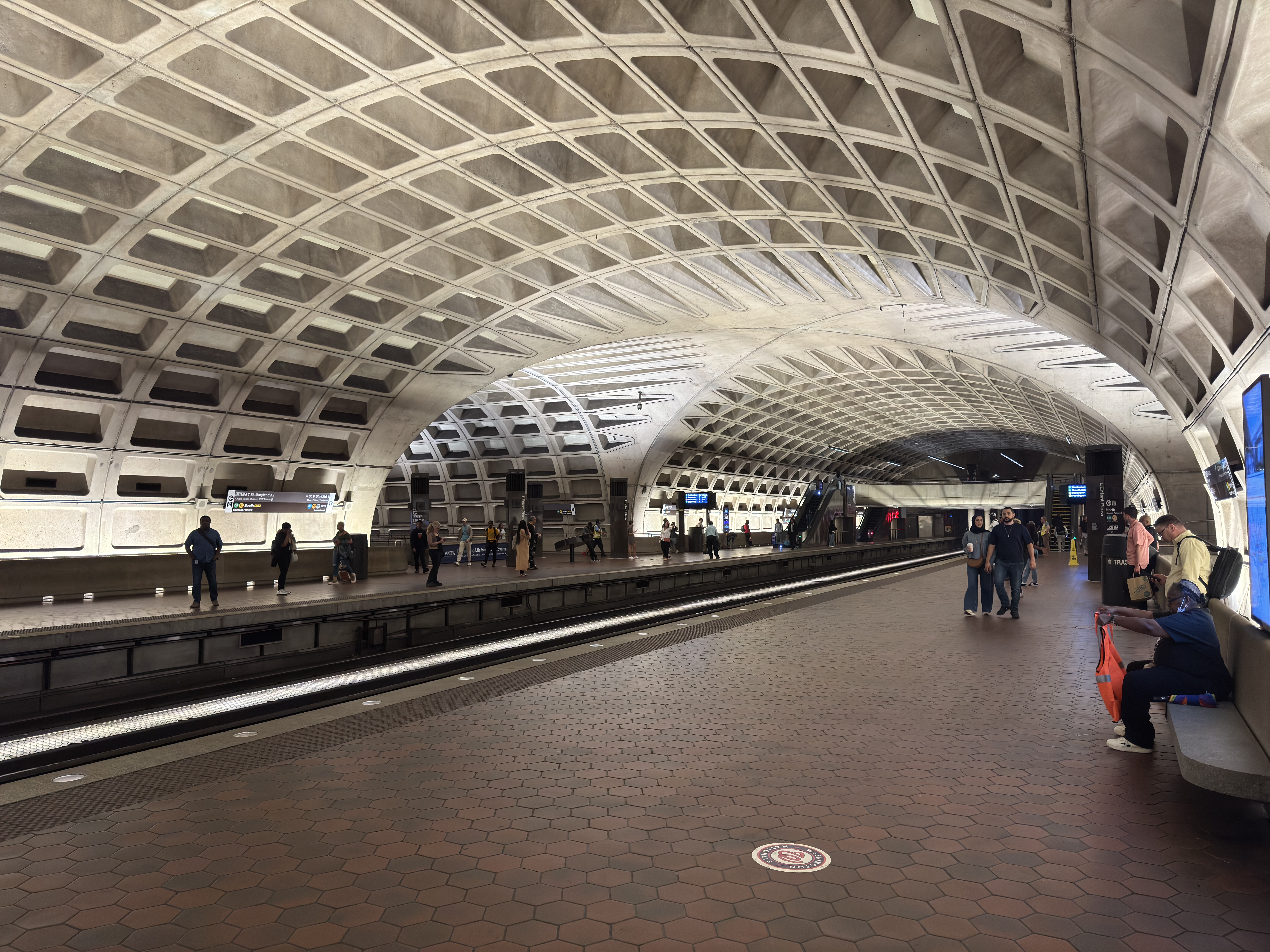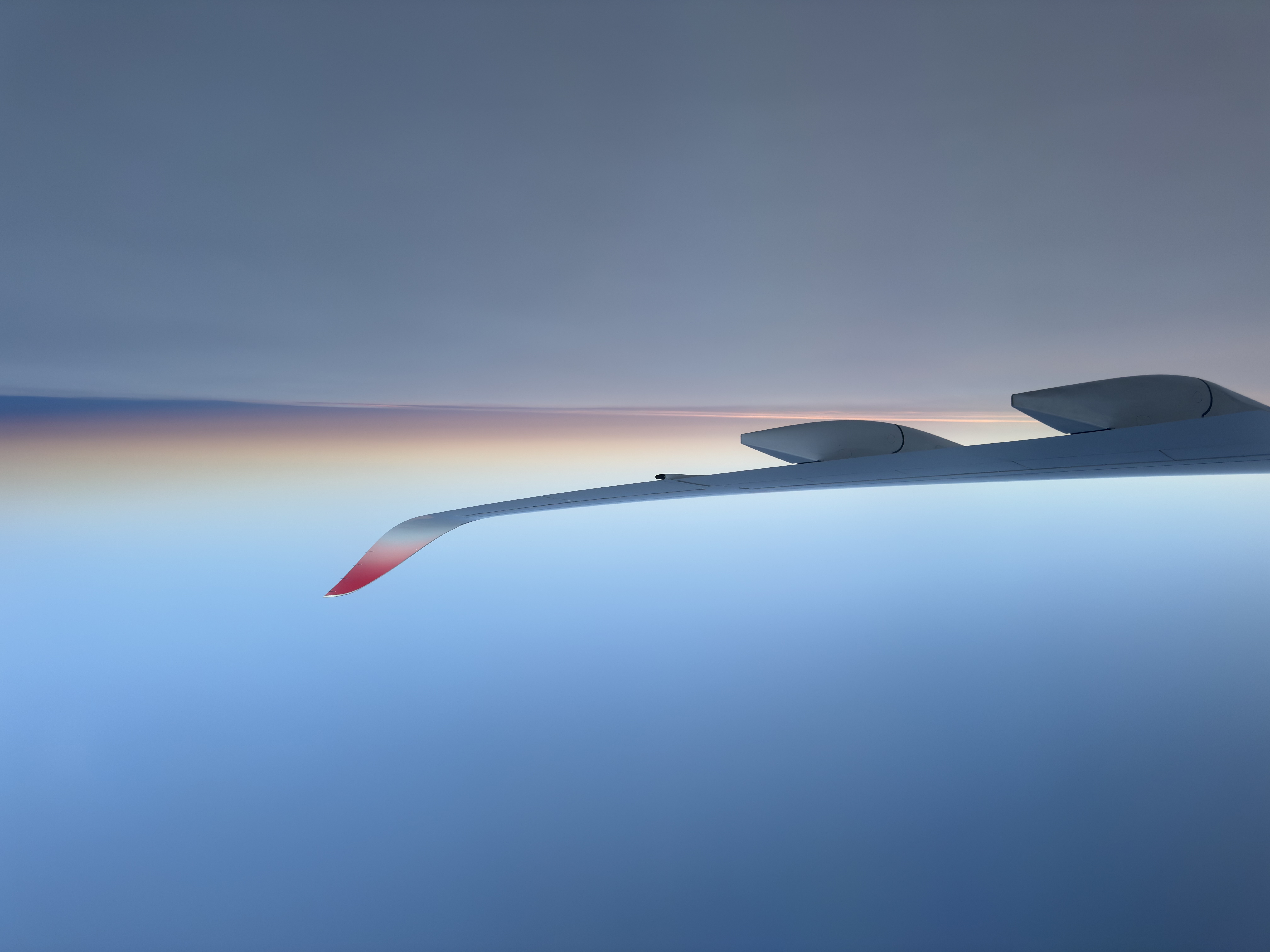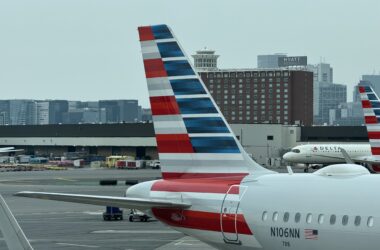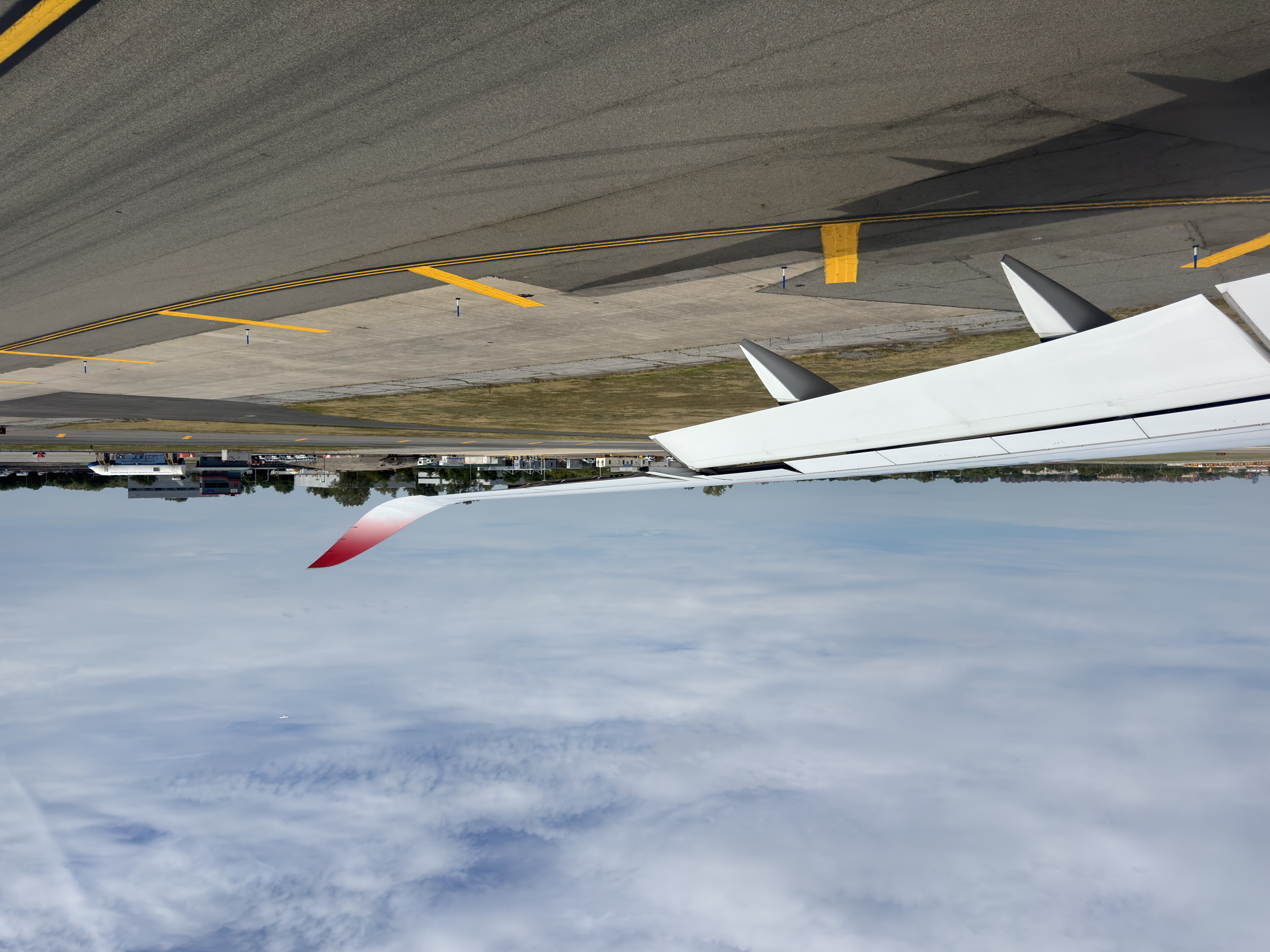I was in Washington D.C. earlier this month and had no shortage of time spent on the Metro. It’s a fantastic, simple system that makes it easy for commuters and visitors alike to get around the medium-sized city.
One thing I love about the Metro is the architecture of the train stations. It’s a distinct, brutalist build that makes me whip my phone out for photos no matter how often I visit.
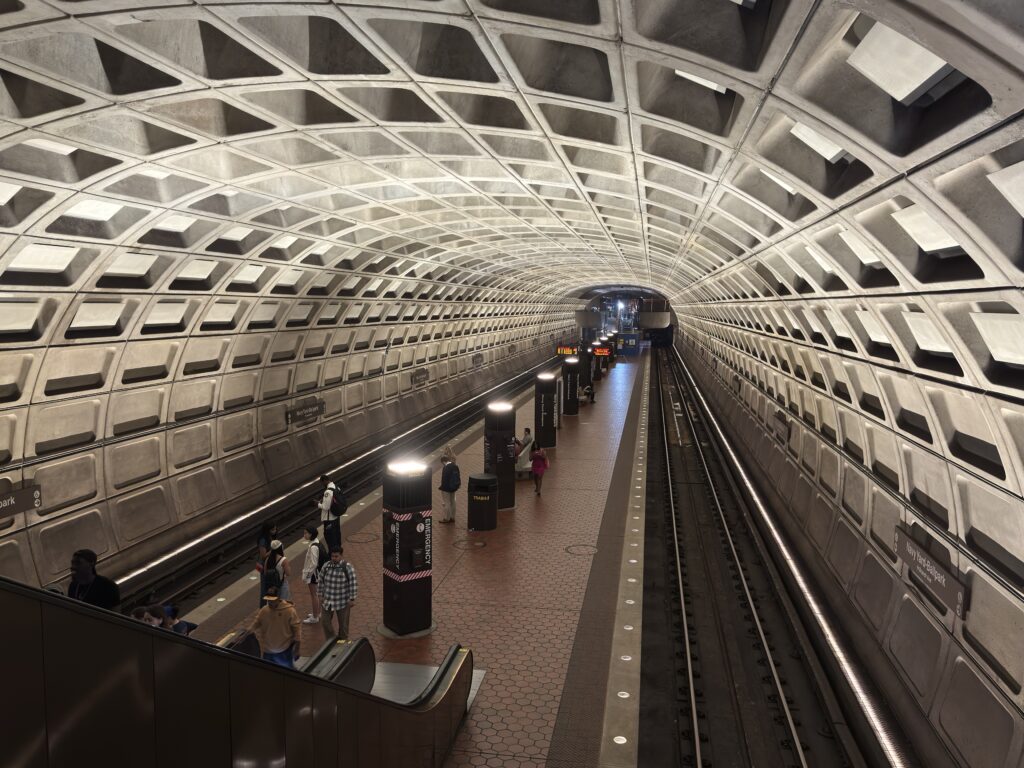
I stayed at the Thompson Washington D.C. during my time there, and the hotel is located about a 2-3 minute walk from Navy Yard-Ballpark station.
This station features the classic, overarching D.C. Metro station look. Quoting Wikipedia, “Many Metro stations were designed by Chicago architect Harry Weese and are examples of late 20th century modern architecture. With their heavy use of exposed concrete and repetitive design motifs, Metro stations display aspects of Brutalist design.”
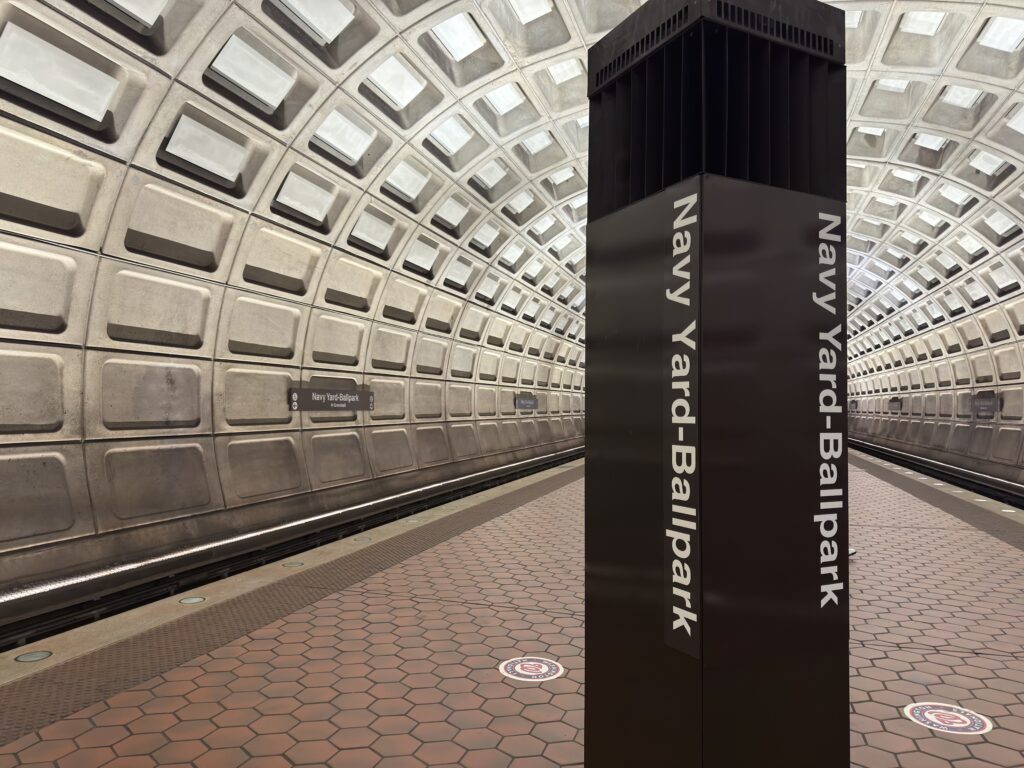
Lights are located on the side of the tracks and on top of the platform signage, and reflect off of the overarching ceiling.
This particular station is also close to Nationals Park, home of the Washington Nationals (hence the name Navy Yard-“Ballpark”). You can notice a couple of Nats logos on the platform.
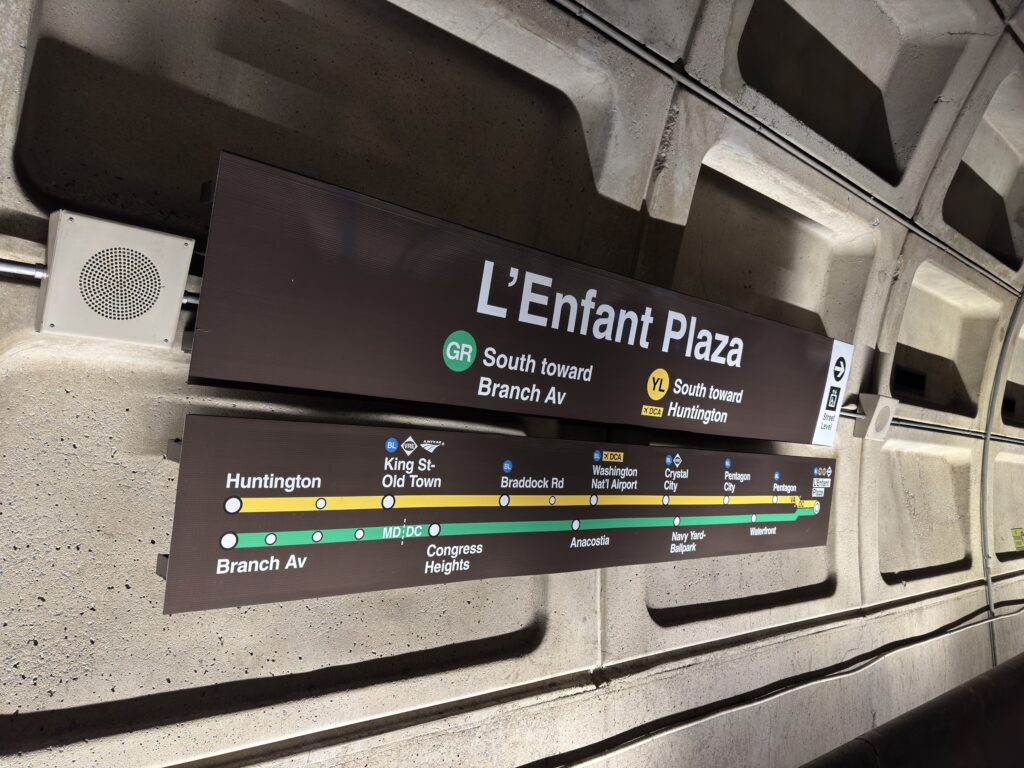
Much of my time was spent around Navy Yard and L’Enfant Plaza. The two stations are about 4 minutes apart.
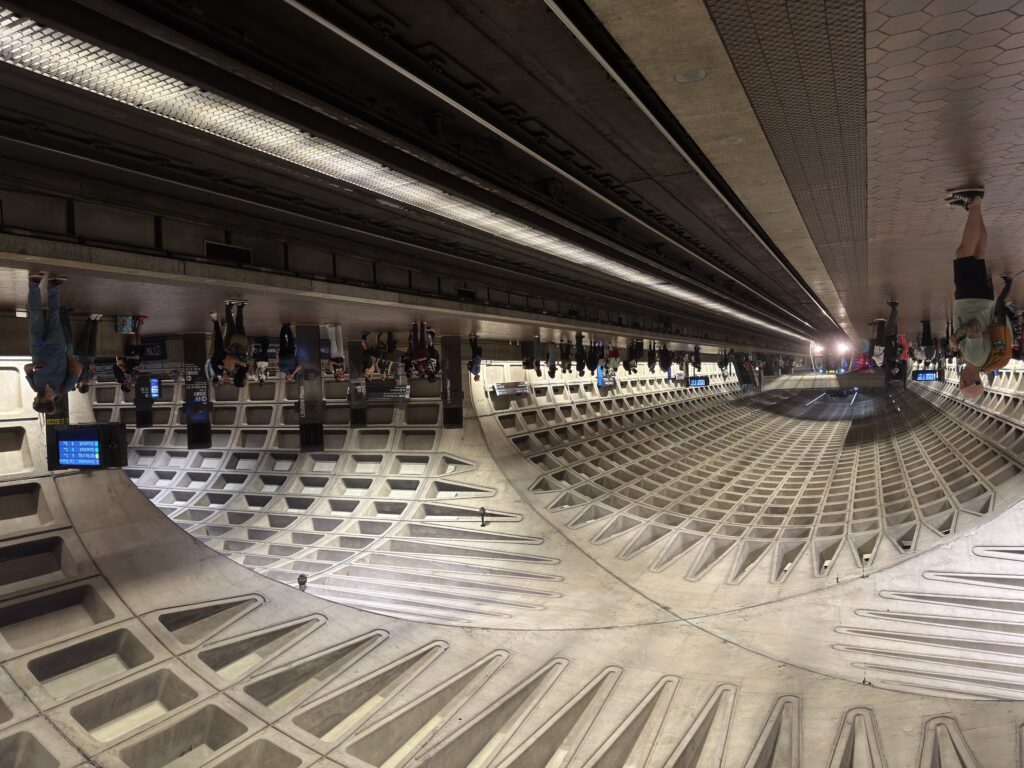
L’Enfant Plaza is a large transfer station, with the Yellow and Green lines on the upper level and the Blue, Silver, and Orange lines on the lower level. The two lines cross each other like a plus sign, which you can see in the above photo. This creates a very cool open section in the middle.
Unlike Navy Yard-Ballpark, there are two platforms on the side instead of one platform in the middle.
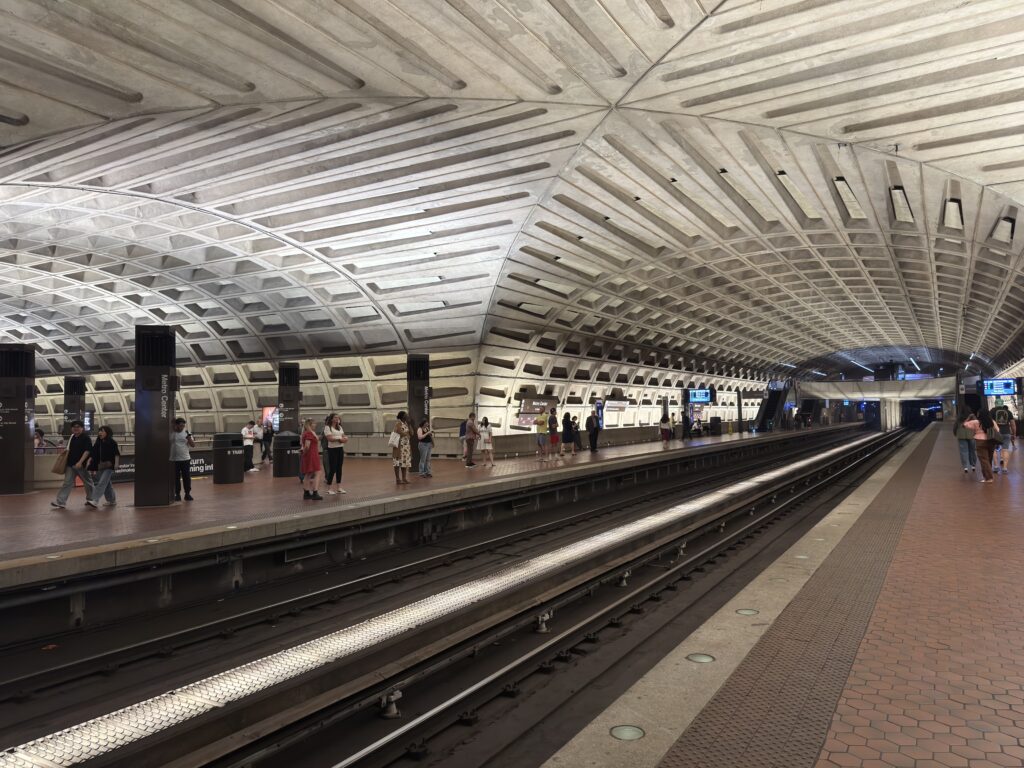
Metro Center station is very similar to L’Enfant Plaza, with the Red Line on the upper level and Blue, Silver, and Orange lines on the lower level.
Related: Taking the Silver Line from Washington D.C. to Dulles Airport
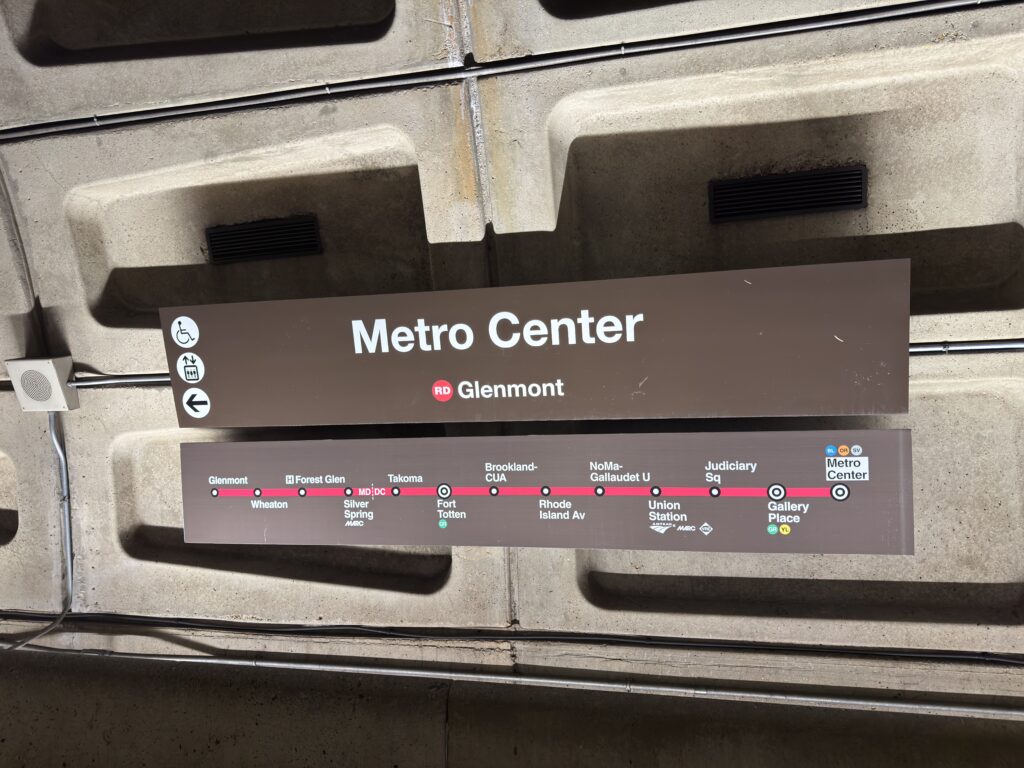
I gotta say, WMATA has very good wayfinding with clear signage.
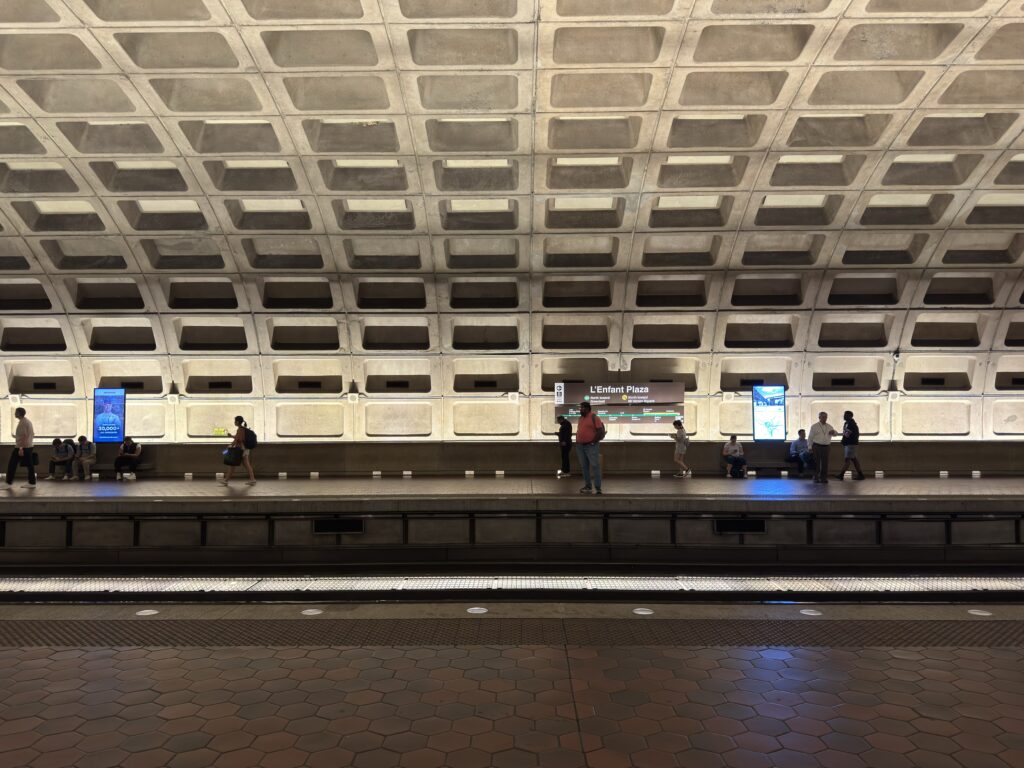
Metro doesn’t have train arrival announcements, but the lights by the platform edge flash on and off when a train is approaching (see those circular lights in the photo above?).
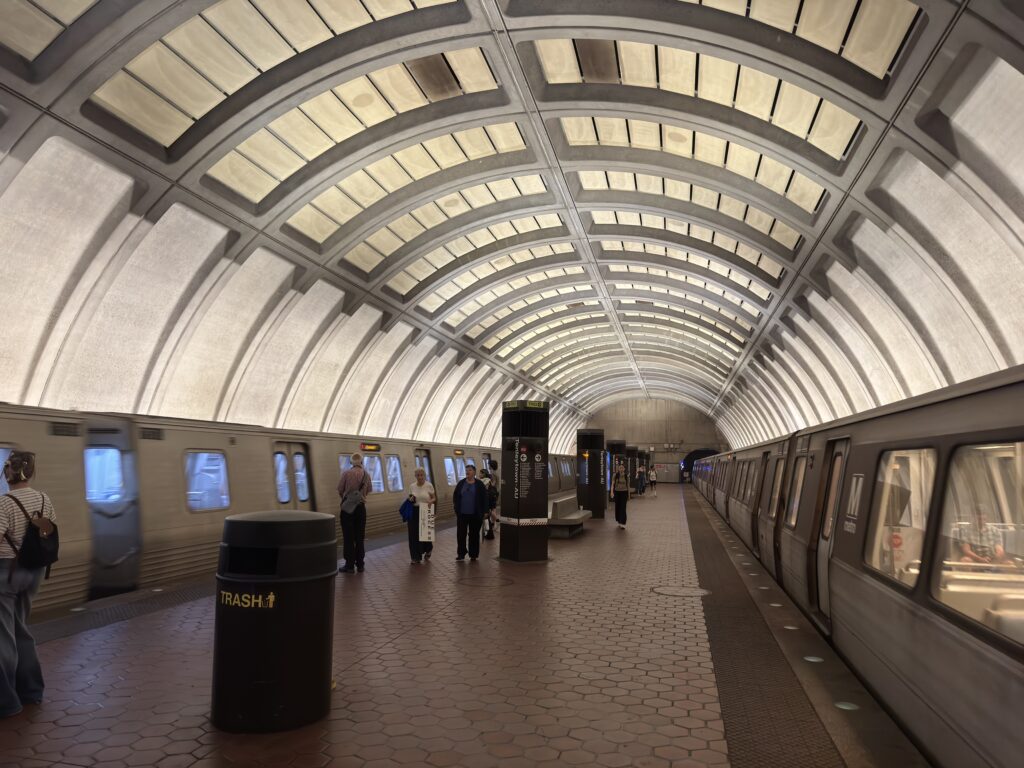
This is Tenleytown-AU station on the Red Line, in Northwest D.C. Some newer stations, like this one, have a simpler design, but it’s the same idea with their overarching structure.
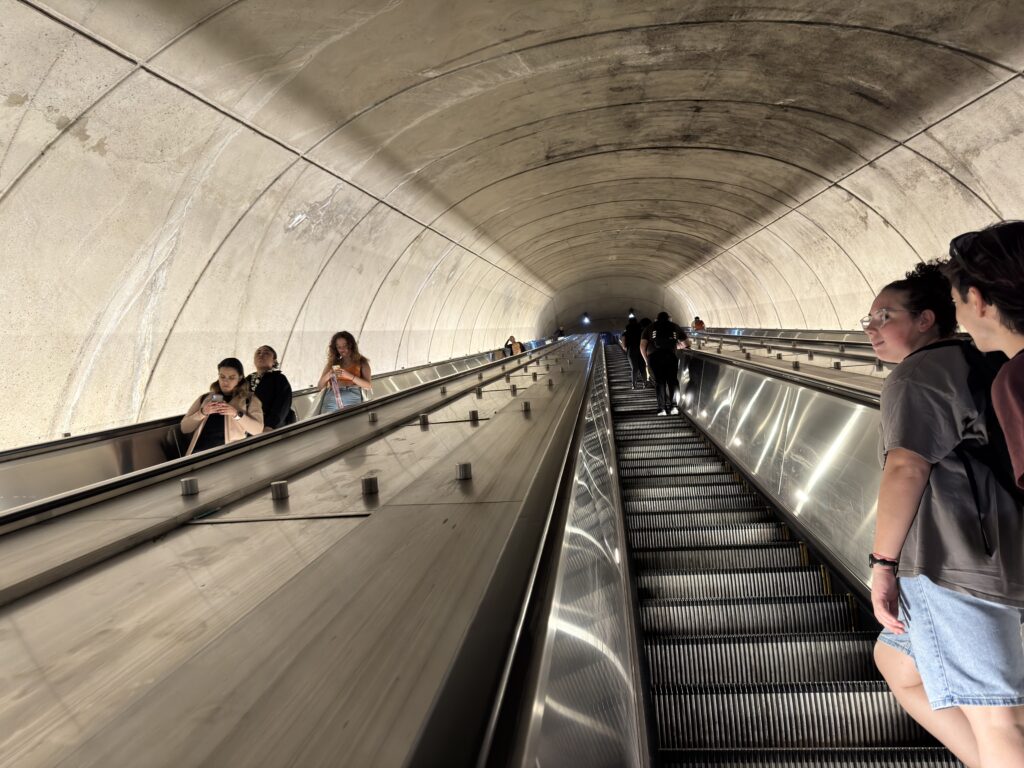
The D.C. Metro is a very deep system, with many long escalators from the platforms to the mezzanine to ground level.
As a general rule, subway lines are deeper the newer they are, because there are more obstacles underground in today’s cities compared to the older days. Metro opened in 1976, meaning the first lines are still just 49 years old. For comparison, the New York City subway began operation in 1904, over 120 years ago.
Having a relatively young system should help WMATA and Washington D.C. better modernize both its train and station operations moving forward. They’ve already been working on integrating Automatic Train Operation lately, and their large platforms and stations give them an edge on adding platform screen doors, which they released a rendering of as recently as last month:
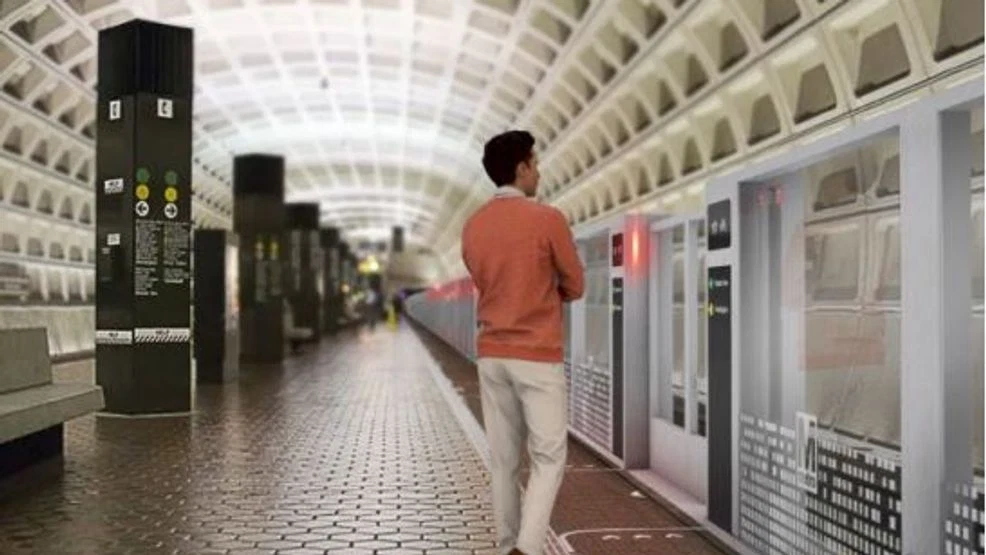
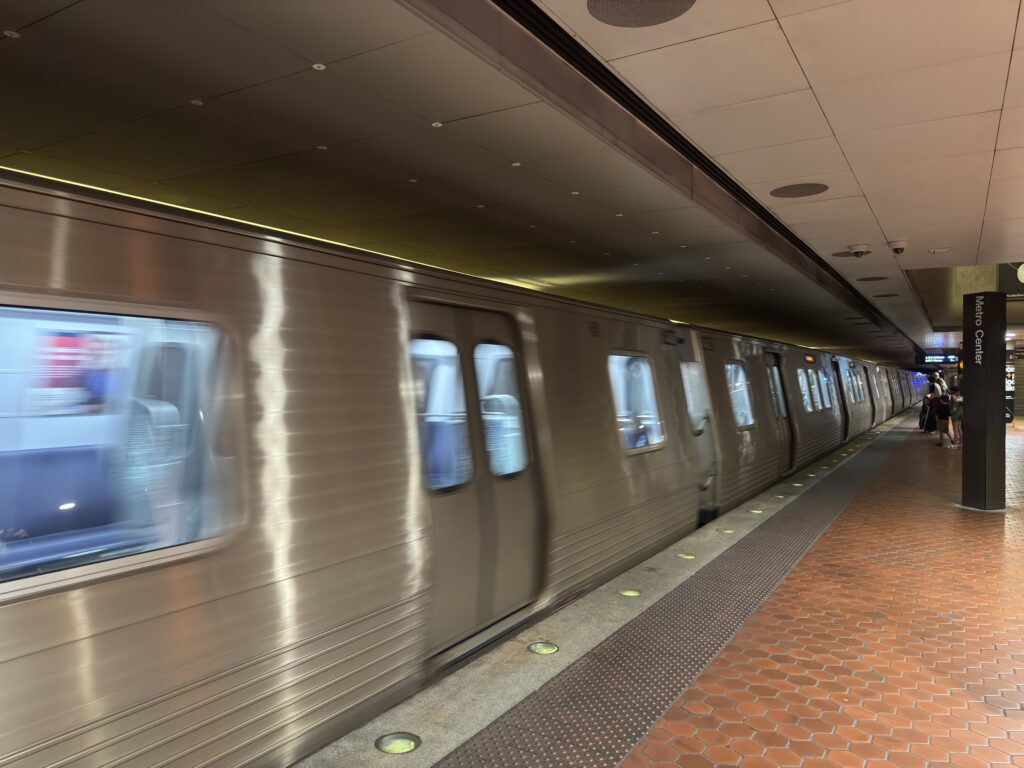
Overall, Metro is very convenient. It makes it easy to get around the city, and the airport connections are some of the best (if not the best) in the country. I’ve always loved the architecture and stations in this system, and it was great to come back and utilize the Metro again.
All photos taken by the author unless labeled.




